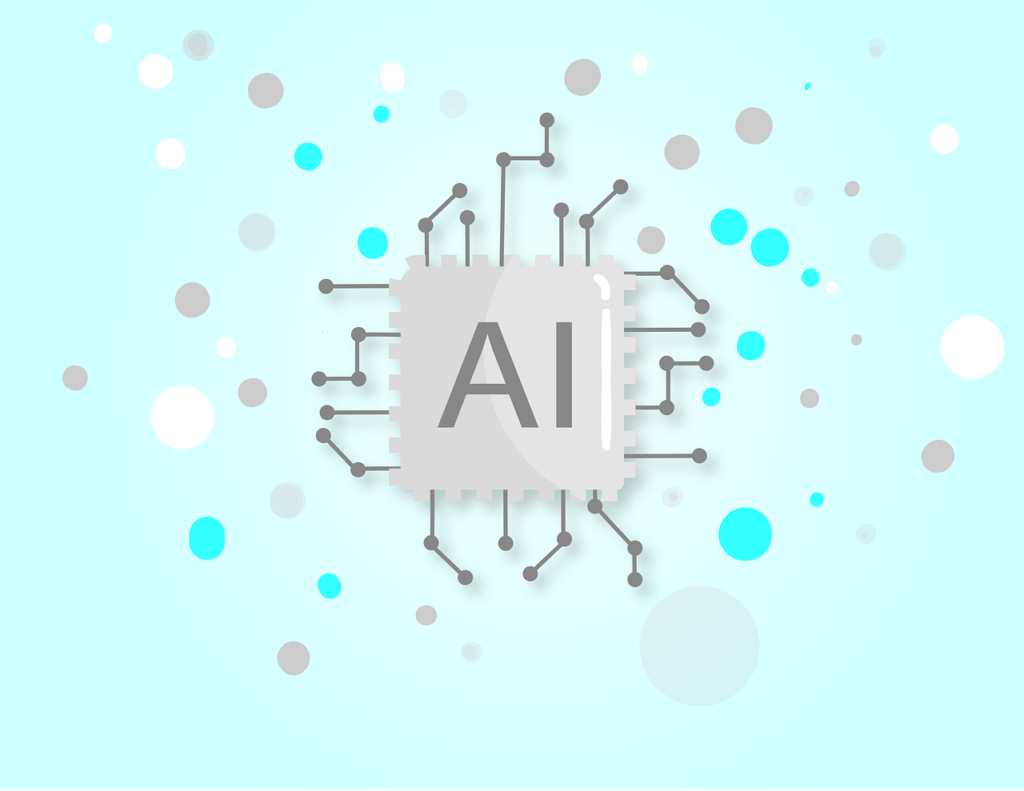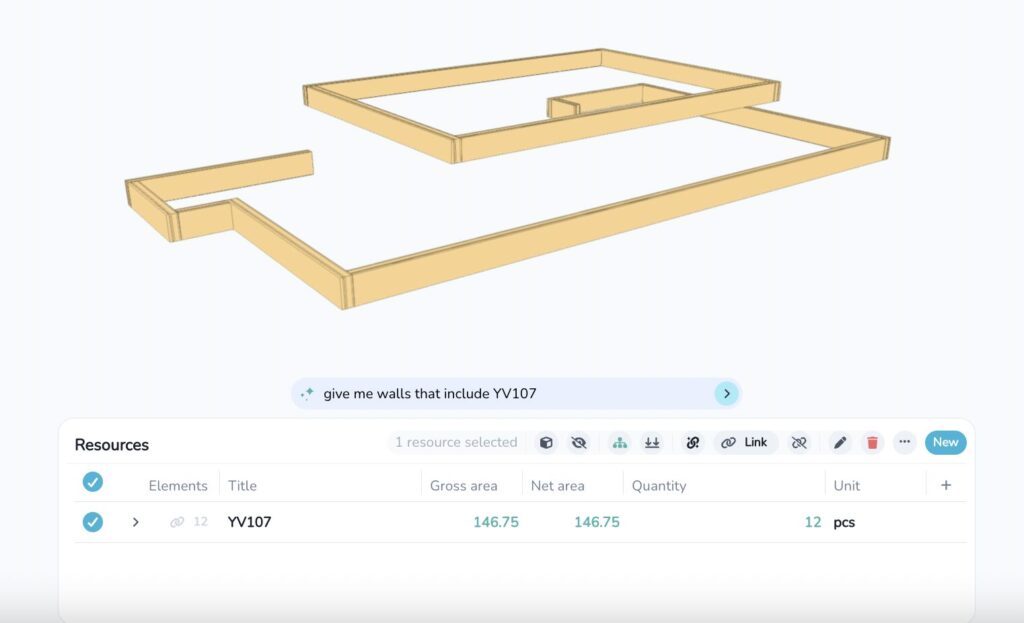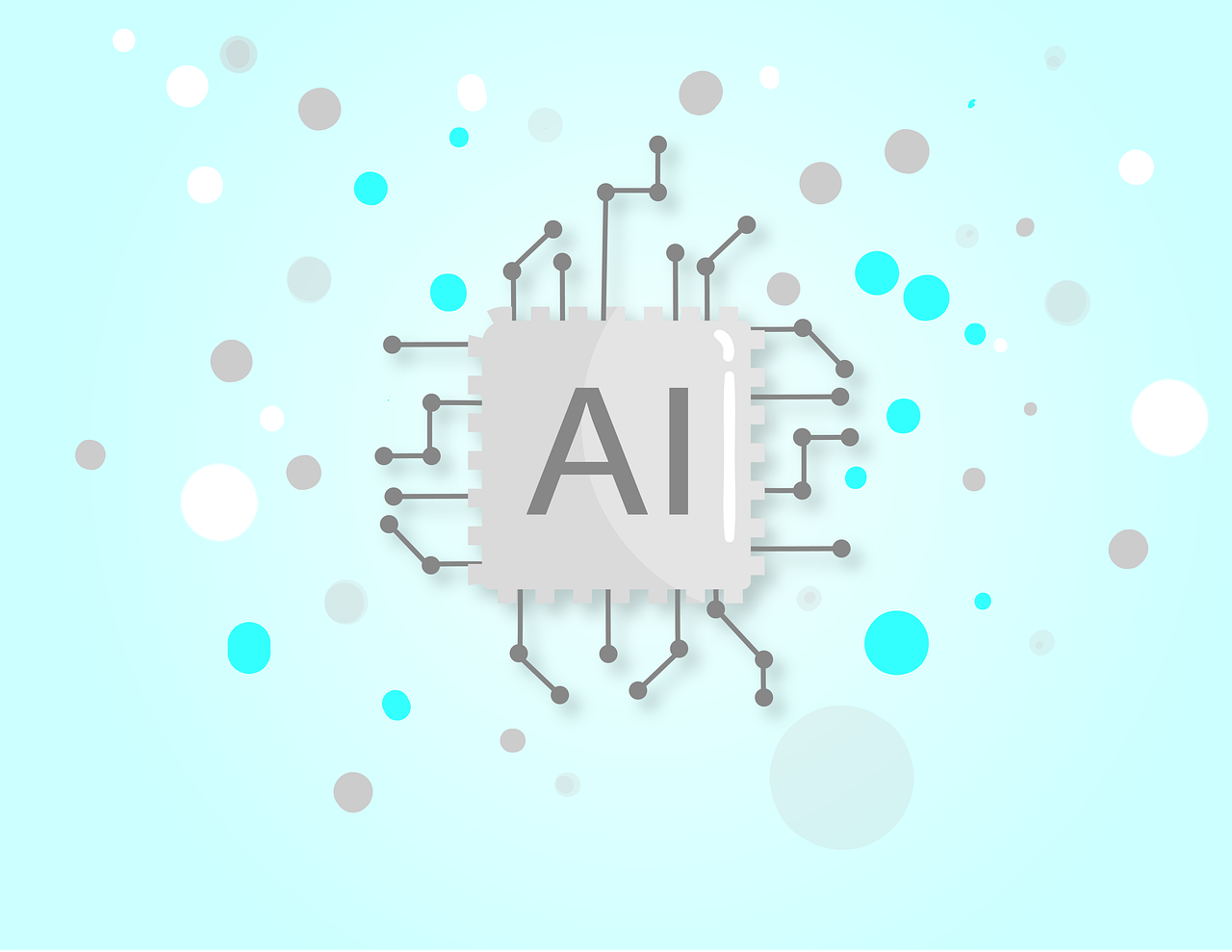Written by Peder Aaby, Chief Technology Officer in Sparkel. Msc. Cybernetics and Robots with specialization in machine learning
Click here to see Sparkel.io’s offering for GPT4 based BIM and PDF quantity takeoffs
Building Information Modelling (BIM) was supposed to take the global digitalization trend to construction and be the true enabler for productivity growth.
It never happened.
Globally, construction sector labor-productivity growth averaged 1 percent a year over the past two decades, compared with 2.8 percent for the total world economy and 3.6 percent for manufacturing.
REINVENTING CONSTRUCTION: A ROUTE TO HIGHER PRODUCTIVITY, McKinsey
While BIM has numerous benefits, the costs associated with having having an up-to-date information model are very high. And these models and the platforms to interact with them are often heavy and technical, which never really make the benefits apparent or useful for the regular construction worker.
That said, the recent development in AI and specifically large language models will be a revolution for the construction industry and BIM usage. Suddenly we can now abstract the technical nature of these models and interact with them with natural language. And AI can automatically fill in and correct the information gaps in existing models. Both making the models 10x more accessible and give a very large cost decrease in creating and maintaining a up-to-date building information model.
The following post will go into the basics of this AI revolution and how it deeply affect how we think about buildings and building information models .

Brief Explaination of AI
AI, or artificial intelligence, refers to the simulation of human intelligence in machines that are programmed to think and learn like humans. AI technologies enable machines to perform tasks that would normally require human intelligence, such as recognizing speech, making decisions, and identifying data patterns. These technologies are advancing exponentially and are becoming integrated in a wide range of industries, from healthcare and finance to transportation and manufacturing. And the recent advances in large language models is nothing less than a revolution.
Brief Explaination of BIM
In order to comprehend the rest of the article, a quick refresher of the BIM concept is useful. Building Information Modeling (BIM) is a digital representation of a building’s physical and functional characteristics. It is used by architects, engineers, and construction professionals to design, construct, and operate a building. Modelling software is used to create a 3D model of the building, which includes information about the materials, structure, and systems used in its construction. The importance of BIM lies in its ability to provide a comprehensive view of a building’s design and construction process. BIM allows project teams to collaborate more effectively, identify potential issues before construction begins, and reduce errors and costs.
Challenges with BIM
Despite the many benefits that BIM offers, there are also challenges. One criticism is that BIM can be difficult and expensive to implement. Implementing BIM requires significant changes to traditional workflows, as well as new hardware and software investments. Another criticism of BIM is that it can be overly complex and difficult to use, especially for smaller construction firms with limited resources. Additionally, there are concerns about the lack of interoperability between different BIM software programs, which can make collaboration between different stakeholders more difficult.
Can AI Solve BIM Challenges?
While AI cannot completely solve all the criticisms of BIM, it can address many of the challenges associated with the technology. For example, AI can help to streamline the implementation process by automating certain tasks, such as material takeoffs, and reducing the need for manual data entry. AI can also make BIM more user-friendly by simplifying complex workflows and providing more intuitive interfaces. Ie. simply querying information or quantities from your BIM model in natural language. Additionally, AI can help to address interoperability issues by providing a common platform for different stakeholders to collaborate on a project. While AI cannot replace human expertise in the construction process, it can help to augment it by providing data-driven insights and reducing the risk of human error. Therefore, while AI cannot solve all the criticisms of BIM, will help to make the technology more accessible, efficient, and easier to use.
Benefits of AI in BIM
The benefits of AI in BIM are numerous. First and foremost, AI can and will save time and reduce errors. With AI, contractors can extract material quantities by just asking for it, reducing the time and effort required for manual calculations. This can also reduce errors caused by manual calculations, ensuring accuracy in the construction process. However, the latest rapid advances in AI has been in the field of large language models. These models cannot consume BIM data directly. Therefore, having an interface between AI and the BIM model is a necessity. Meaning, AI needs a platform like Sparkel to function for BIM. The platform at hand works as a layer between large language models and BIM.
Use Cases of AI in BIM
There are several use cases of AI in BIM. One of the most common use cases is in the estimation of material quantities. AI algorithms can analyse 3D models and extract quantities of materials automatically, saving time and increasing accuracy.
Another use case is in the scheduling of construction projects. AI algorithms can analyse 3D models and predict the time required to complete a project based on past data. This can help contractors to schedule projects more accurately and reduce delays.
AI can also be used to analyse construction designs and identify potential issues before construction begins. For instance, AI algorithms can identify potential clashes between different building components, reducing the need for rework during the construction process.
Text to Quantity Extractions
Text to quantity extraction is a method of extracting material quantities from a BIM model by analyzing the model’s metadata. Traditionally, this process required manual filtering of the model, searching for properties, and setting up the material extraction. This process is often time-consuming and prone to errors when done manually.

However, with the introduction of AI, the text to quantity extraction process has been transformed. AI algorithms can analyse 3D models and extract quantities of materials automatically, saving time and increasing accuracy. For instance, AI algorithms can extract the number of windows, the size of the windows, the type of windows, and the number of bricks needed to build a wall in a matter of seconds.
AI algorithms can also learn from past data and provide accurate predictions for future construction projects. For instance, if a contractor has completed a similar project in the past, the AI algorithm can use the data from that project to predict the material quantities required for a new project. This can save time and reduce errors caused by manual calculations.
Already Available on the Market
Our company, Sparkel, has started to implement AI into material takeoff software in the cloud. Sparkel uses AI algorithms to extract material quantities from BIM models with just a sentence. This approach eliminates the need for manual data entry and reduces the risk of human error, while also saving contractors significant amounts of time and money. Our solution also includes advanced features, such as automatic quantity checking and quality control, to ensure that the extracted data is accurate and reliable. By leveraging AI technology in this way, we are helping to make material takeoffs faster, easier, and more efficient than ever before, while also improving the overall quality of construction projects.
Importance of Quality-Checking AI Results
While AI can provide accurate and reliable results, it is important to quality-check the results given by AI and be critical. This is because AI algorithms can make mistakes and provide incorrect results. Therefore, it is important to check the results provided by AI algorithms and ensure they are accurate before making any decisions based on the results. However, as time proceeds, AI will exponetially reduce its amount of erros and increase its accuracy through machine learning.
One way to quality-check AI results is to compare them to results obtained using traditional manual methods. This can help to identify any discrepancies or errors in the AI results. Another way to quality-check AI results is to use different AI algorithms and compare their results. This can help to identify any inconsistencies or errors in the AI algorithms being used.
It is also important to be critical of the software being used. Contractors should ensure that the AI software they are using is reliable and provides accurate results. They should also ensure that the software is regularly updated to ensure it is using the latest AI algorithms and techniques.
A Matter of Risk Management
All construction projects contains risk. Over time, data analysis’ can help you detirmine the amount of quality-checking of AI results which is needed to fit your risk profile. In the future, it very well might be more risky doing the calculations manually than using the AI results directly.
Should you know BIM before you utilize AI in BIM?
While it is not strictly necessary to have extensive knowledge of BIM before utilizing AI in BIM, it is recommended to have a basic understanding of BIM workflows and processes. This is because AI algorithms are often designed to work within specific BIM frameworks and workflows, and having a basic understanding of these frameworks can help to ensure that the AI algorithms are being used correctly and effectively. Additionally, having knowledge of BIM can help to ensure that the results provided are accurate and can be properly interpreted.
However, it is not necessary to become an expert in BIM before utilizing AI in BIM. Many AI software programs are designed to be intuitive and user-friendly, and can guide users through the process of extracting information from BIM models. Furthermore, many AI algorithms can learn and adapt to new workflows and processes over time, making them more effective and efficient with continued use. Ultimately, while having knowledge of BIM can be helpful when utilizing AI in BIM, it is not a requirement for success, and contractors can leverage AI technology in BIM without extensive prior knowledge of the technology.
AI Potential in Other Fields of Construction
One way that AI can be used in BIM is in the area of clash detection. Clash detection is the process of identifying areas where two or more objects in a building model intersect or overlap, and is an important step in ensuring that the final construction is free from conflicts or errors. AI algorithms can be used to analyse building models and identify clashes automatically, reducing the need for manual inspection and making the process more efficient.
Another area where AI can be used in BIM is in the creation of 3D models. Creating detailed 3D models of buildings or structures can be a time-consuming and labor-intensive process, but AI algorithms can be used to automate some of the more repetitive tasks involved in this process. For example, AI can be used to generate 3D models from 2D drawings or images, reducing the need for manual data entry and making the process faster and more accurate.
Despite the many potential benefits of AI in BIM, there are also some challenges that must be overcome in order to realize its full potential. One of the biggest challenges is ensuring that AI algorithms are properly trained and validated to ensure that they are accurate and reliable. This requires large amounts of high-quality data, as well as sophisticated machine learning algorithms that can learn from this data and make accurate predictions.
Another challenge is ensuring that AI is used in a way that is consistent with best practices in BIM. This means ensuring that AI algorithms are compatible with existing BIM workflows and that they are used in a way that is consistent with industry standards and guidelines. It also means ensuring that the results provided by AI algorithms are properly interpreted and validated by human experts, to ensure that they are accurate and reliable.
Despite these challenges, the potential benefits of AI in BIM are significant, and many companies are already starting to explore the use of AI in this area. By leveraging the power of AI algorithms to analyse, interpret, and extract data from BIM models, companies can improve the efficiency and accuracy of their construction projects, reduce costs, and improve the quality of their final product.
Conclusion
AI will transform the way BIM is being used in the construction industry. AI algorithms can analyse 3D models and extract quantities of materials automatically, saving time and increasing accuracy. With the advent of AI, contractors can extract material quantities with just a sentence, making it easier to plan, estimate, and schedule construction projects.
The benefits of AI in BIM are numerous. AI can save time and reduce errors, improve collaboration between different stakeholders in the construction process, and improve the overall quality of construction projects. There are several use cases of AI in BIM, including the estimation of material quantities, scheduling of construction projects, and analysis of construction designs.
However, it is important to quality-check the results provided by AI algorithms and be critical of the software being used. Contractors should ensure that the AI software they are using is reliable and provides accurate results. They should also ensure that the software is regularly updated to ensure it is using the latest AI algorithms and techniques.
In conclusion, contractors who leverage AI technology in BIM will be better positioned to stay ahead of their competitors in the construction industry. AI can provide significant time and cost savings while improving the overall quality of construction projects. It is an investment that is worth making in order to remain competitive and successful in the modern construction industry.





